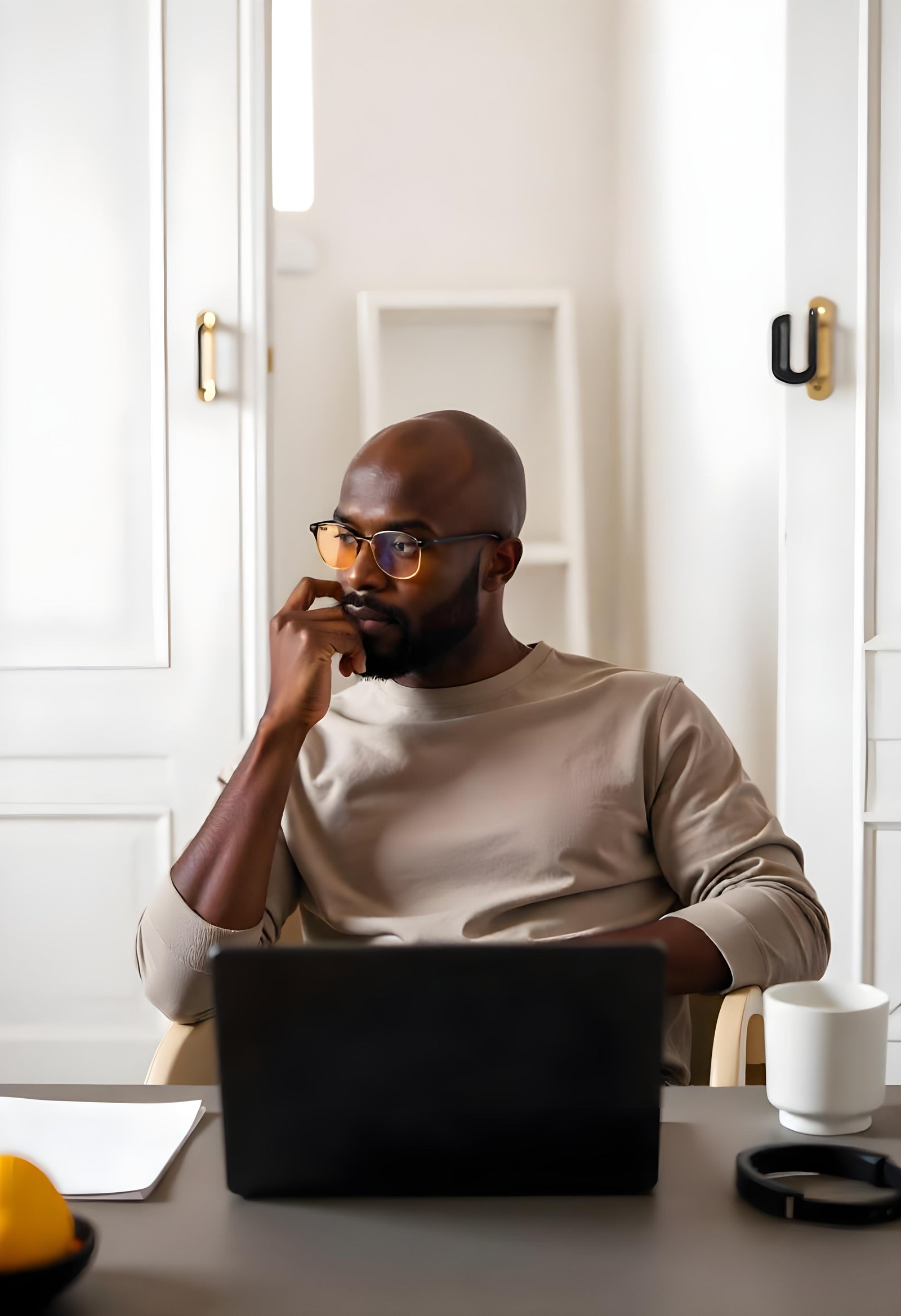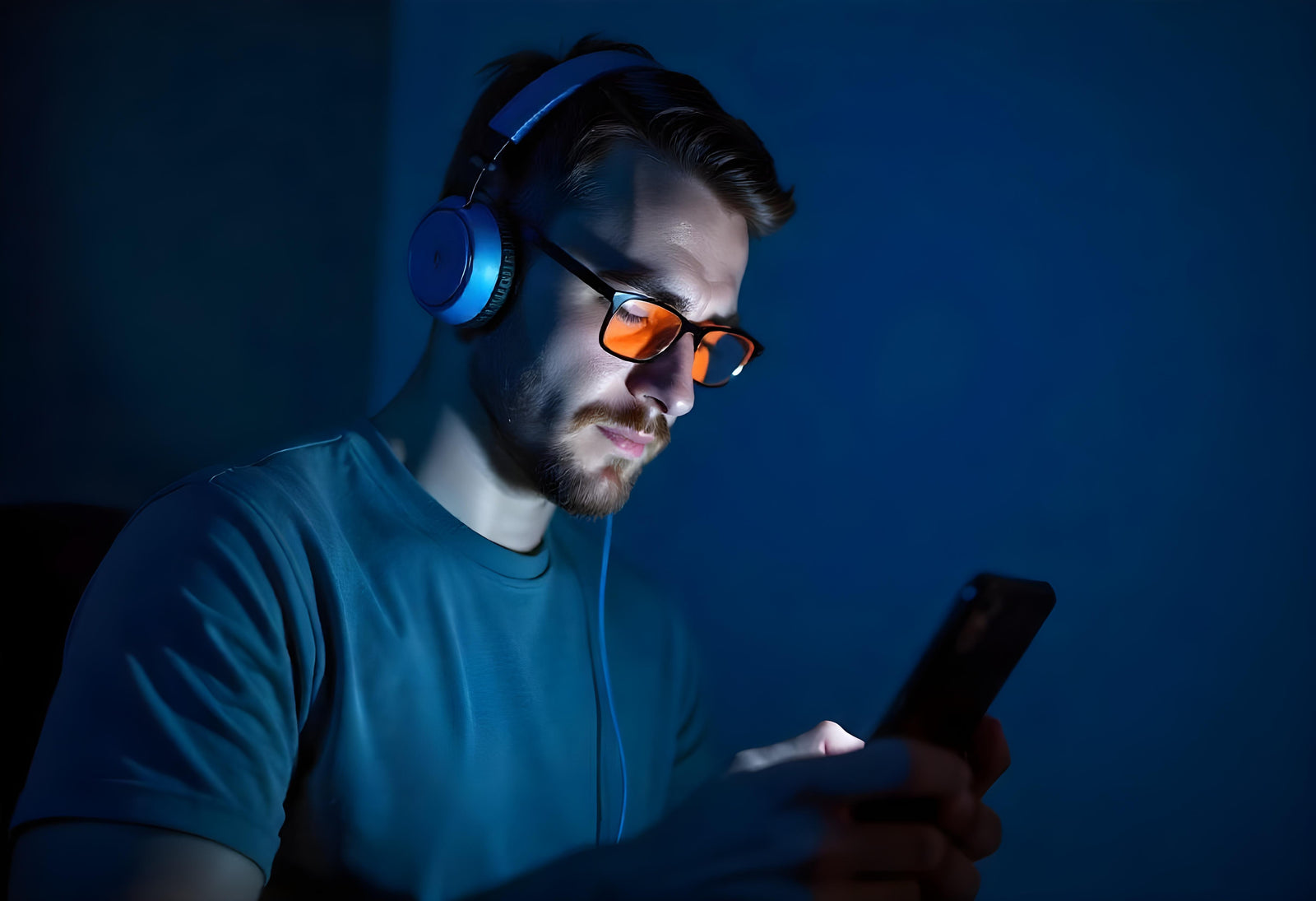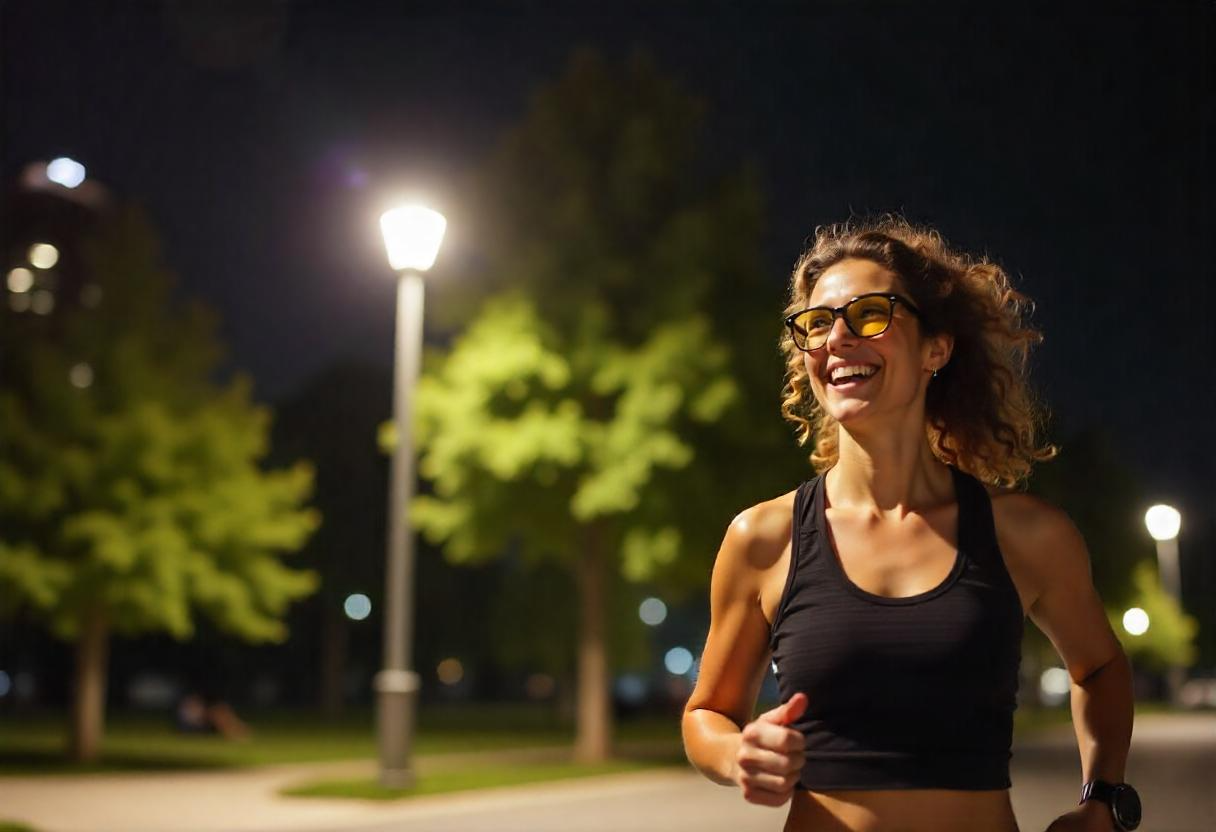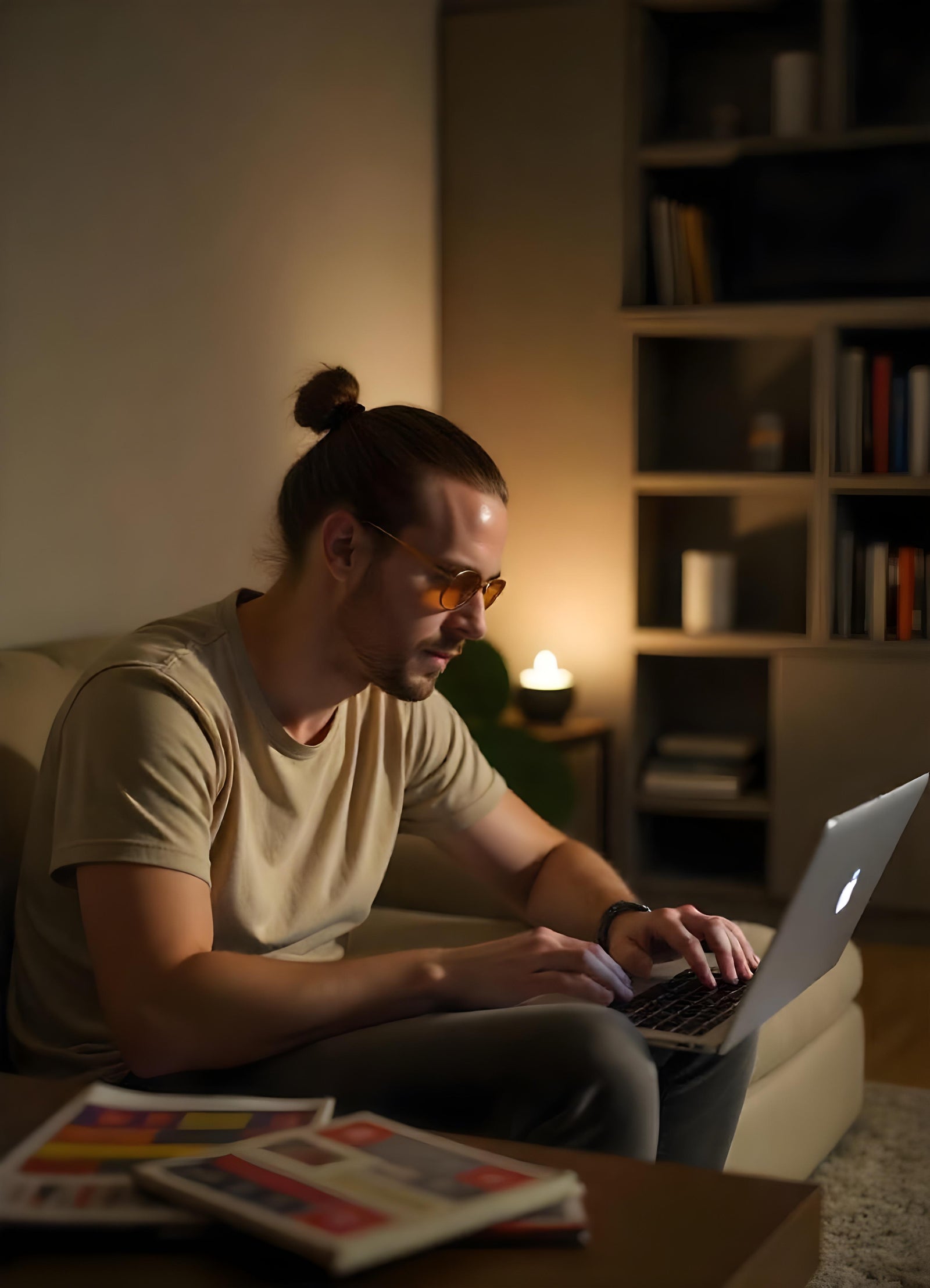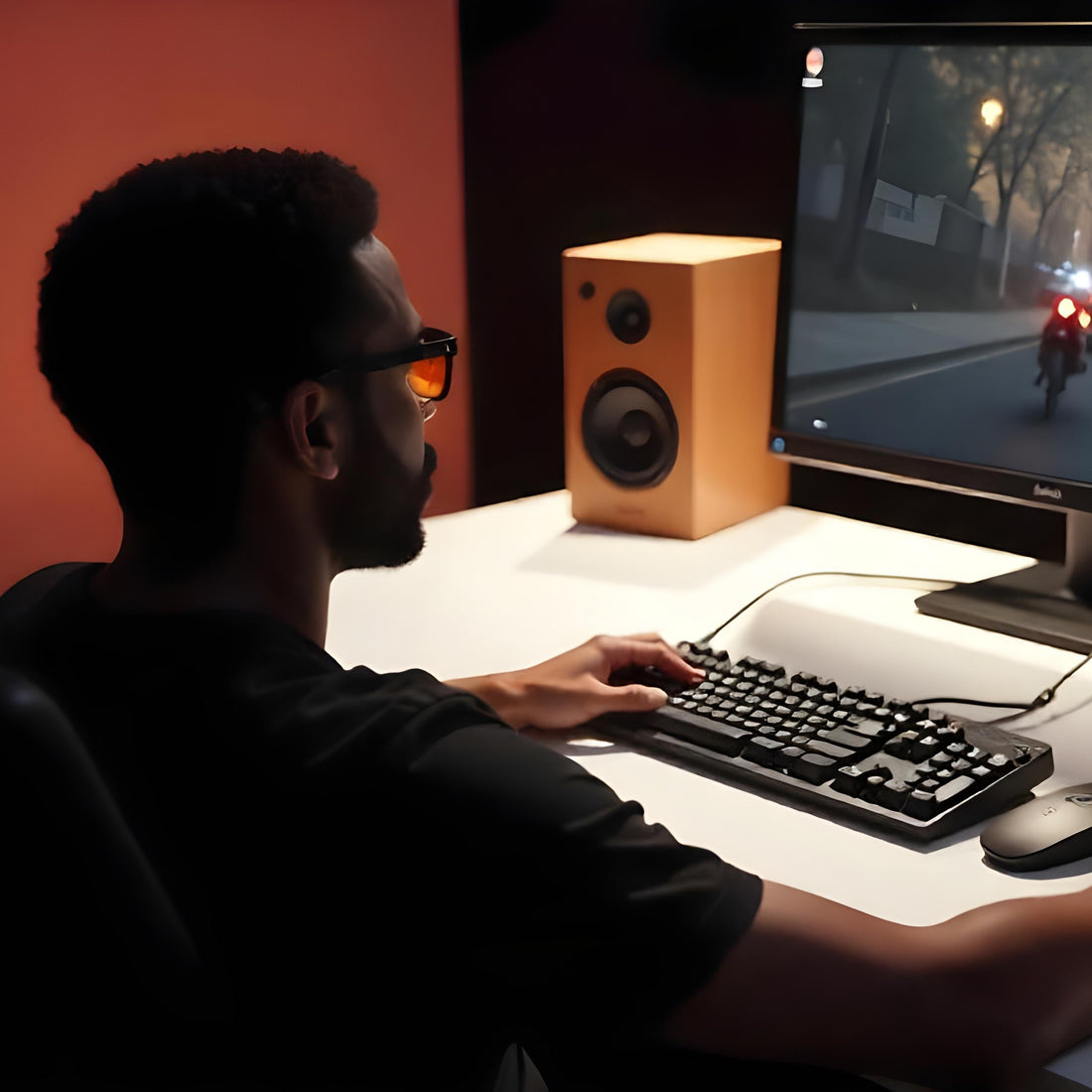
Gamer’s Guide to Reducing Eye Strain: Tips + Best Blue Light Glasses
Ever finished an intense gaming session only to feel like your eyes were sandpapered? You're not alone. Digital eye strain affects nearly 90% of gamers, with symptoms like dryness, headaches, and blurred vision. But here's the good news—with the right habits and gear, you can protect your eyes without sacrificing performance.
This guide breaks down science-backed solutions, from optimal screen settings to why amber-tinted glasses beat clear lenses for marathon gaming sessions.

Why Gamers Get Eye Strain (The Science)
Your eyes weren't designed to stare at pixels for hours. Gaming triggers three key strain factors:
Blue Light Overload
Screens emit high-energy blue light (415–455 nm), which:
Reduces blink rate by 60% (hello, dry eyes)
Disrupts circadian rhythm if gaming at night
Focus Fatigue
Fixed focal distance = overworked eye muscles
Glare & Contrast Issues
Poor lighting or overly bright screens cause squinting
Symptom Checklist
✔️ Headaches after 1+ hours
✔️ Blurred vision when looking away from screen
✔️ Light sensitivity
✔️ Neck/shoulder tension (from leaning forward)

6 Proven Ways to Reduce Eye Strain
1. The 20-20-20 Rule (But Gamers Hate It)
Every 20 minutes, look at something 20 feet away for 20 seconds.
Reality check: Hard mid-game? Try doing it during loading screens.
2. Optimize Screen Settings
| Setting | Ideal Adjustment | Why It Works |
|---|---|---|
| Brightness | Match room lighting | Prevents pupil over-dilation |
| Blue Light | Night mode (warmer tones) | Cuts HEV light by 30% |
| Refresh Rate | 120Hz+ | Reduces flicker-induced strain |
3. Best Blue Light Glasses for Gamers
Orange/Amber Lenses (Best for Night)
Blocks 65–98% blue light
Trade-off: Color accuracy dips (avoid for competitive FPS)
Yellow Lenses (Daytime Gaming)
Blocks 40% blue light, minimal color distortion
Clear Lenses (Weakest Protection)
Only 10–20% reduction
Pro Tip: Glasses with anti-reflective coating reduce glare from overhead lights.
4. Hydrate Your Eyeballs
Use preservative-free artificial tears every 1–2 hours, avoid fans/ac blowing directly at your face
5. Position Like a Pro
Screen Distance: Arm's length (24–30 inches)
Height: Top bezel at eye level
Chair: Feet flat, back supported (slouching = neck strain = worse eye fatigue)
6. Lighting Hacks
Bias Lighting: Place LED strip behind monitor to balance contrast
Avoid: Overhead fluorescents or gaming in total darkness

FAQs: Gamer Eye Strain Solutions
Do Gaming Glasses Really Work?
Yes, but only if they block at least 30% blue light (clear lenses don’t cut it). Amber lenses are most effective for nighttime use.
Can Eye Strain Cause Long-Term Damage?
No evidence of permanent harm, but chronic strain can lead to myopia progression in teens and disrupted sleep.
Best Screen for Eye Strain?
OLED (perfect blacks = less pupil adjustment)
High Refresh Rate (144Hz+) to reduce flicker
Do Dark Modes Help?
Yes for text-heavy games, but warmer color temps (like f.lux) work better than pure black backgrounds.

Final Tip: Listen to Your Eyes
If you experience persistent pain or vision changes, see an optometrist. Otherwise, combine amber lenses + screen adjustments + hydration for max comfort.
What’s your go-to eye strain fix? Share your hacks below!





